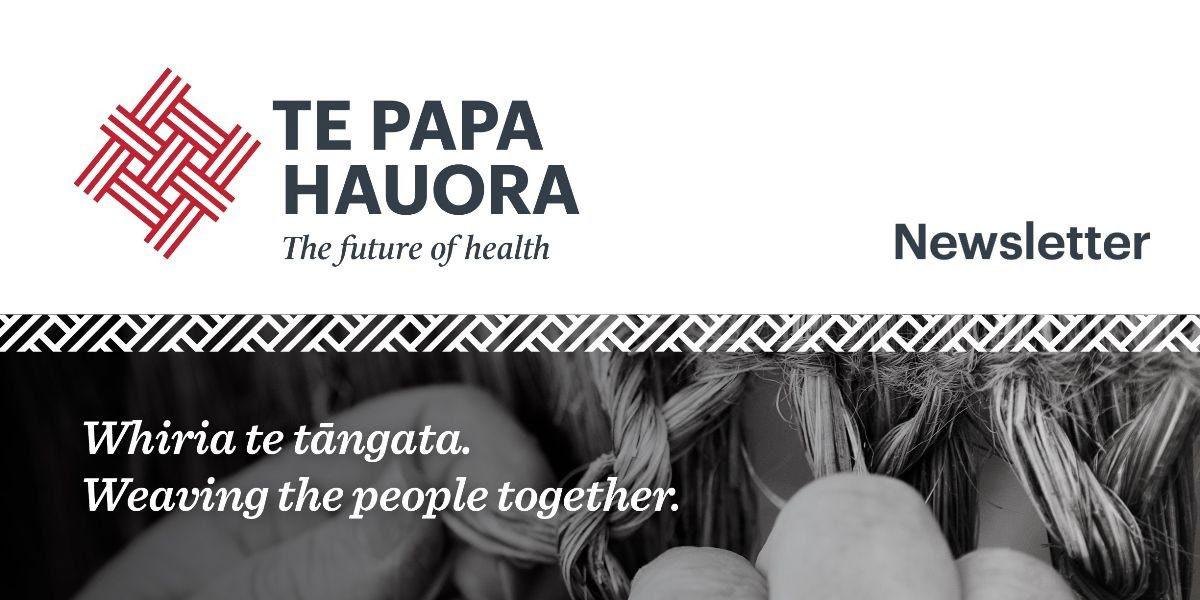
3 minute read
› Increasing use of virtual consultations to manage Dermatology demand › Care Capacity Demand Management programme reaches new milestone ... pg 8
our stories – a – ta –tou ko –rero
5 July 2021
Advertisement
Increasing use of virtual consultations to manage Dermatology demand
Many people with skin conditions that don’t meet the threshold for a specialist consultation are getting specialist advice anyway thanks to the hard work of Christchurch Hospital Dermatologist Caroline Mahon. All referrals from general practitioners (GPs) for new Dermatology consultations go through Health Pathways. GPs submit referrals via the Electronic Request Management System, attaching photos of the person’s condition.
For those who aren’t prioritised to be seen by a specialist in hospital, their GP does their best to manage them in the community. However, Caroline has been reviewing these declined patients, checking the photos, and emailing GPs with an extensive written plan of care, says Service Manager Dave Nicholl.
“As a result, the number of ‘virtual consultations’ for new patient referrals has risen from 887 from May 2019/20 to 1400 in July to May 2020/21. Caroline has almost doubled the amount of ‘virtuals’ from last year. “She is really maximising her precious time to continue to provide this service to GPs. We don’t know how lucky we are to have her.”
There has been a lot of positive feedback from GPs about the high quality and detail of Caroline’s treatment plan letters, Dave says. Comments include:
“My colleagues and myself are hugely grateful for your input and the service you provide.” (Rangiora GP) “Just wanted to say thanks for the detail and quality of the letters we get from you.” (Riccarton Clinic) Caroline says doctors working in primary care have contributed to the improvement. “The vast improvement in the quality of clinical photographs and the clinical information accompanying e-referrals to dermatology over the last 12 months, has really facilitated a huge growth in the rapid provision of written or telephone advice to referrers. “This means we see and treat those needing in-person specialist assessment much faster than 12 months ago, and at the same time, rapidly help GPs manage those who can be cared for in the community,” she says.
Christchurch Hospital Dermatologist Caroline Mahon
5 July 2021

Care Capacity Demand Management programme reaches new milestone
Discussions are beginning with wards and areas on what a year’s worth of data showing patient demand versus care capacity for every shift means for them. The Full Time Equivalent (FTE) Calculation workstream discussions are part of the Care Capacity Demand Management (CCDM) programme that Canterbury DHB began rolling out in 2019. FTE calculation is about better matching nursing and midwifery staff capacity with demand. The data that feeds into discussions on how to achieve this includes: TrendCare data such as daily patient hours over the last year (excluding the lockdown months), patient acuity and patient care provided versus what was rostered and the recommended hours per shift (automatically generated by patient acuity tool, TrendCare); data from other sources including total overtime, extra shifts, staff and patient incidents, unplanned leave, professional development time, shifts below target of ideal safe staffing provision, staff mix, staffing pool and agency use; and the standard roster plan prepared by the ward/area. Recommendations for changing the roster model may be made - e.g. more or fewer staff hours for shifts/days; whether more or less FTE is required; or a different staff mix is needed, e.g. more/fewer enrolled nurses, registered nurses or health care assistants.
The data is also looked at across the system rather than in isolation. This means there may be recommendations for the system that impact wards/areas. Recommendations are agreed by the charge nurse or midwifery manager, union partners, the director of nursing/ director of midwifery, Finance, relevant service manager, and People and Capability, and go to the CCDM Council for approval. New Zealand Nurses Organisation (NZNO) staff on the Trendcare steering group would like to acknowledge the high quality of TrendCare data entered by nurses, especially for teams/areas getting close to completing FTE calculations.
The NZNO staff also want to recognise the invaluable contributions clinical staff delegates and nurse managers have made to the FTE calculation discussions that have begun. Sharing the clinical context for their ward or area is essential to informing the discussion about what any possible changes to the existing roster might look like. CCDM Programme Director Janette Dallas says it will take time to get the whole system right before staffing on a given shift or day starts to feel more stable. “Nevertheless, it’s exciting to be able to work together in a data-driven way to get there and know that we’ll have the chance to review how things are going every year.”








